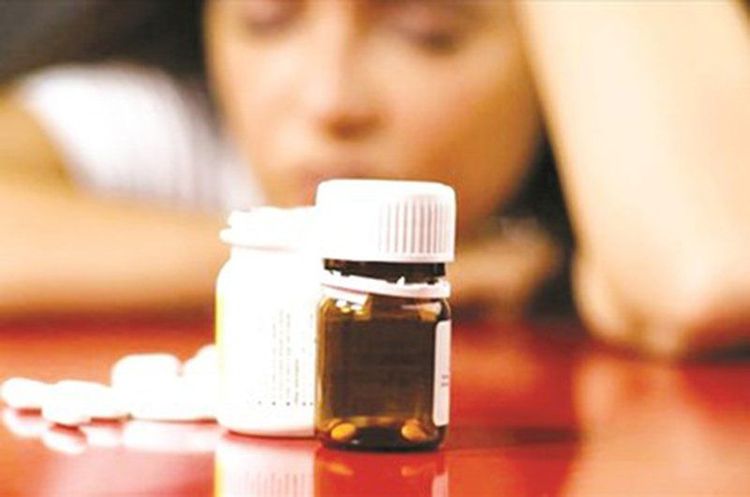This is an automatically translated article.
The article is professionally consulted by Master, Doctor Vu Quoc Anh - Department of Pediatrics - Neonatology - Vinmec Danang International General Hospital. Dr. Anh has nearly 10 years of experience as a resident doctor and treating doctor at Hue Central Hospital and Danang Children's Hospital.Infants and young children with tetralogy of Fallot or other congenital heart defects with right ventricular outflow tract obstruction are often hospitalized for hypoxic cyanotic episodes. Although infantile cyanosis is rare during this period, they can occur in the first months of life, usually 2-6 months of age, while the infant is eligible for surgical intervention. art.
1. What is hypoxic cyanosis?
Hypoxic cyanosis in infants and young children is a common manifestation in children with bilateral shunts of the right and left hearts, especially in the cyanotic congenital heart defect tetralogy of Fallot. However, hypoxic cyanosis can still occur in children with other forms of pulmonary stenosis associated with ventricular septal defects.Episodes of hypoxic cyanosis in infants and young children with intracardiac shunts are the effect of an acute imbalance between pulmonary and systemic vascular resistance, resulting in increased blood flow from right to left through the ventricular septal defect. As a result, the obstruction of the right ventricular outflow tract is reduced, but because the blood does not reach the lungs, it quickly bypasses the great circulation, which is oxygen-poor blood, and the child will become cyanotic.
The triggers for cyanosis are usually when the baby is crying, defecating, nursing or feeding, startled awake from sleep, dehydration, fever, rapid heart rate or when the child is agitated.
2. How does the cyanosis due to lack of oxygen manifest?
Hypoxic cyanosis is characterized by:Often followed by the above triggers but not yet under control; for example, the more fussy the baby, the more severe the cyanosis will appear Fast and deep breathing Increased heart rate Syncope or lethargy Convulsions Decreased intensity of heart murmurs due to decreased blood flow through abnormal shunts If the child is older and aware of their condition, the child automatically has a squatting response. At that time, hypoxic cyanosis requires early recognition and treatment to prevent further progression and prevent further complications. complications from prolonged hypoxia, loss of consciousness, convulsions or even death. While some bouts of cyanosis may simply resolve on their own or simply prevent or improve a trigger, some require specialized medical intervention, including emergency surgery.

3. How to treat cyanosis due to lack of oxygen in young children?
3.1 Basic initial treatment
The basic initial treatment are measures that can be done at home, in the classroom or anywhere that parents, nannies or caregivers of children with cyanotic congenital heart defects need to keep in mind. . Immediate management, combined with prevention of the continuation of the precipitating factors, will effectively improve cyanosis or effectively stop the attack, reducing the number of times that need to be hospitalized.Initial basic treatments include:
Quickly hold the child in a knee-to-knee position in the caregiver's arm, i.e. hip flexed, child's knees raised, chest touching. This will help increase systemic vascular resistance, thereby reducing right-to-left shunts and resulting in more blood flow through the lungs. Have the child breathe oxygen through the mask. Even non-invasive mechanical ventilation has proven useful in resistant cases. Calmly comfort and reassure the child, reducing fear, fussiness, and agitation before other painful interventions are needed.
3.2 Intensive treatments
If the above measures do not improve, the child should be taken to the emergency room at the medical center most needed. In most cases, cyanosis due to hypoxia in young children will quickly be resolved with simple manipulations as follows:Spray fentanyl into the nasopharynx at a dose of 1 microgram/kg body weight. If cyanosis persists: Give morphine sulphate 0.1 mg/kg body weight. This drug can be administered subcutaneously unless intravenous access is already possible; However, do not delay. The current administration of fentanyl and morphine depresses the respiratory center, reduces excitability, and therefore reduces carbonic respiratory depression as well as reduces systemic venous overload, a factor that also contributes to increase the shunt current from right to left. In addition, tranquilizers also reduce the body's need for oxygen, thus reducing cyanosis. If the response is good, the baby's blood oxygen saturation will improve and the systolic heart murmur will become louder again.
At the same time, when the child has reduced agitation, it is necessary to quickly access the intravenous line, which can be placed in the arms, legs or scalp while the child's position is still head-knee flexion. This line can be rehydrated slowly with 10mL/kg of body weight as 0.9% saline initially, both to help prevent dehydration and as a way to be ready to respond if it gets worse.
Treatment of metabolic acidosis associated with hypoxia using sodium bicarbonate solution.

3.3 Specific treatments
If the child does not respond quickly or adequately to the above measures, it is necessary to consult a pediatric cardiologist, pediatric resuscitation specialist.Consider indications for endotracheal intubation and active respiratory control by mechanical ventilation
Drugs that may be indicated in this step are:
Phenylephrine: Load dose 5-20 micrograms/kg body weight (max. 500 micrograms) pumped slowly through a peripheral or central vein. Thereafter, a maintenance infusion of phenylephrine at a dose of 0.1-0.5 micrograms/kg body weight/minute was administered by central intravenous infusion by diluting 10 mg of phenylephrine in 500 mL of 0.9% sodium chloride or 5% glucose solution. Esmolol: Loading dose of 600 micrograms/kg body weight injected slowly through a peripheral or central vein. Thereafter, a maintenance infusion of esmolol at a dose of 300-900 micrograms/kg body weight/min was administered by central intravenous infusion by diluting esmolol into a solution of 0.9% sodium chloride or 5% glucose at a concentration of 10 mg/ml. In summary, hypoxic cyanosis in infants or neonates is the result of an acute decrease in pulmonary blood flow due to increased flow of a right-to-left shunt, occurring most frequently in children with quadriplegia. Fallot's syndrome. However, hypoxic cyanosis can also occur in children with other forms of pulmonary stenosis other than ventricular septal defects. It is important to avoid triggers and treat cyanosis, to help children prolong surgery for cyanotic congenital heart disease until they reach the necessary physical conditions.
If you notice any unusual problems in your child, you should take your baby to see a doctor and consult a specialist.
Please dial HOTLINE for more information or register for an appointment HERE. Download MyVinmec app to make appointments faster and to manage your bookings easily.












